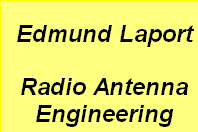

Antentop is FREE e-magazine devoted to Antennas and Amateur Radio an
Special page devoted to
Spreading and Underground Antennas

Custom Search
|
ANTENTOP-
01- 2019, # 023 |
Spreading and Underground Antennas |
|
|
|
Underground radio sites that used the Vertical Rhombic Terminated Antenna
are restricted to area in which the terrain has high resistance
and a small dielectric constant. Therefore it has a low absorption
of Radio Waves.
For antenna wire of these antennas, a wire with a diameter of 1 mm in
plastic insulation with a diameter of 10 mm was used. It is like
a thick coaxial cable with the outer conductive braid removed.
However the cable has strong plastic outer covering. Figure
10 shows the antenna wire.
Underground
Radio Sites for Long Wave Underground radio sites for Long Wave and Super Long-Wave are more common
the Short Wave Underground Radio Site. The sites are used for
navigation and for emergency radio communications. Sometimes at
a short distance from a Long Wave Radio Site it is placed a Short
Wave Radio Site. The antennas at the Long Wave Radio Site usually
are not used for short wave communications however in rare occasions
there have been double applications. The length of effective spreading (or underground) antenna on Super Long
band as usual is in limits 150 -250 meters. Because due losses in the ground it is
hard to improve efficiency of antenna just by length. To improve
the antenna efficiency on the Underground Radio Communication
Site of Super Long Wave there are
used to a quasiresonance antennas. Figure 11 shows design of the spreading antenna for Super Long
range. The antenna consists of two
bent elements 1 and 4 which with the help of the
matching devices 2 and 3 are tuned to resonance. The antenna at
top view has shape of a boomerang. Therefore such antennas in
the USSR have the nick name Boomerang.
|
Figure 12 Top View of Spider Spreading Antenna System |
|
|
|
|
Figure 11 Design of Spreading
Antenna for Super Long Range |
|
|
|
|
|
Page- 13 |
|
 |
 |
|
 |
|
|
|||
Just for Fun:

Powered byIP2Location.com
Thanks for your time!
Last Updated:
December 29, 2019 23:19







